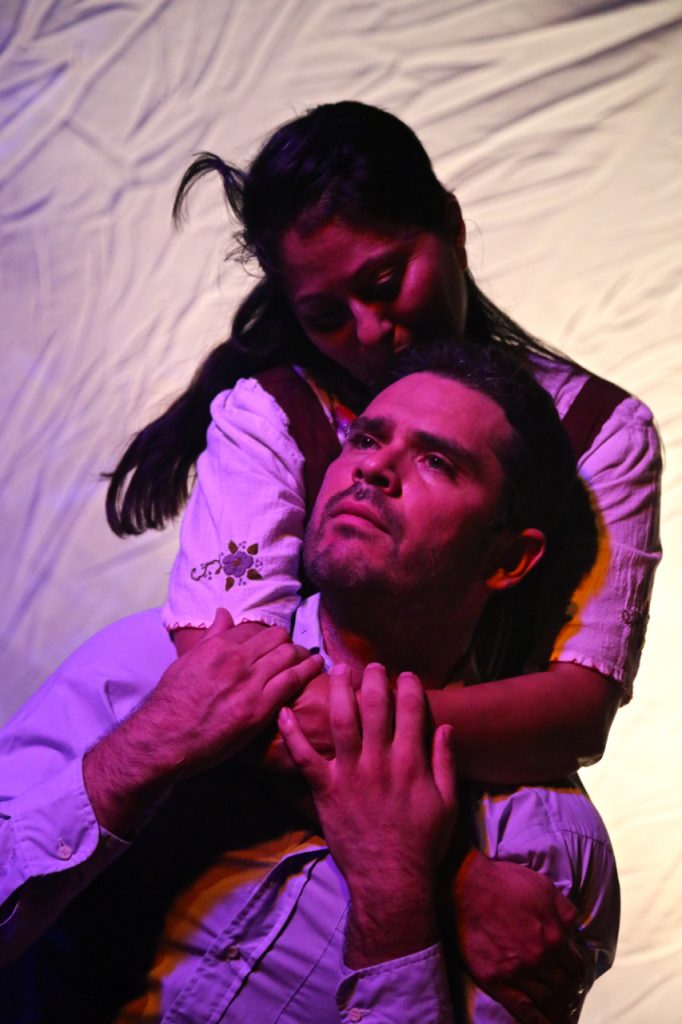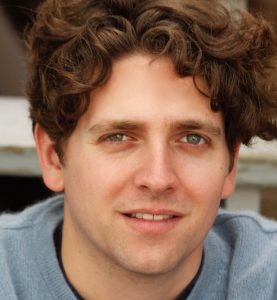Innermission’s Fine ‘Seven Spots’ Holds the World Between the Lines
In August of 1859, the largest solar flare ever recorded set some of the world’s telegraph stations on fire and fueled a brilliant Northern Lights show as far south as Cuba and the Bahamas. The storm, which lasted about ten days, was so massive that its effects can’t be calculated as anything but an abstraction.
Tough, after all, to get your arms around an explosion that turned our skies blood red and whose destructive force was the equivalent of 10 million Hiroshimas.
Solar ferocity, in fact, has a ready parallel in the form of mortal combat. Man has fought some 15,000 conflicts in his 200,000 years under the sun, and his barbarism is impossible to comprehend except as a concept. But tell that to the Hiroshimans who lived through Little Boy or, in this case, the villagers of fictional San Isidro, fighting a civil war over objectives that remain irreversibly unclear. It’s all there in Seven Spots on the Sun, Martin Zimmerman’s play on the ravages that tore the village apart.

Belen (Sandra Ruiz) has her work cut out as physician husband Moises (Jorge Rodriguez) is torn between his senses of duty and betrayal. Photo by Adriana Zuniga-Williams Photography.
It is also very, very good.
The madness, parlayed in flashbacks, starts with town physician Moises, whose wife Belen was killed by soldiers after a drunken priest denied her sanctuary at his church. Moises hasn’t seen a patient in a year and a half; his withdrawal from society parallels that of young laundress Monica, who in a nearby village is forced to face evidence of her husband Luis’ part in the heinous acts.
The forces that unite the characters involve a mysterious plague that affects only children, with Moises the sole and inexplicable healer. As pilgrims flood San Isidro in search of his cure, Moises is forced to confront his past and the town’s wholesale devastation.
Zimmerman’s success lies in the script’s ambiguity. He never names the country in which the war takes place; neither do we know how the conflict started or what either side hopes to accomplish. We have a historyful of wars we can fill in the blanks with, he seems to say; less specificity from him means more imagery for us. A washing machine, a crappy radio, a carton of pineapples and brute force are about as objectified as things get.
…[E]verybody else is fine as they color the action with premonitions of hope and disaster.
That’s where director Carla Nell takes over — she’s free to stylize at will amid the obscure setting, and she takes full advantage. Deliberateness in charting the scenes, an infusion of vocables that mark the stage and an expert choreography of the Town fuel the heavily allegorical action. Nell follows Zimmerman the way a mentor shadows a student — the collaboration is pitch-perfect.
All that agreeable cadence often swirls about Eugenio, the priest whose cowardice is on unending display. Miguel Gongora Jr. is certainly the player of choice — his rocky bass is at once plaintive and contemplative in his narrations. Bernardo Mazon’s Luis could break Monica’s neck with one hand, and perhaps the thought has crossed his mind amid the couple’s war-fueled passion for one another; the good Jennifer Paredes’ hysterical Monica might just invite the assault.

Playwright Martin Zimmerman knows when to back off, thus leaving our imaginations in play.
Shaun Tuazon’s busy set design is as roily as the cast seeks to portray itself, with Nate Cargill’s lights and Robert Malave’s costumes lending themselves to Nell and the cast’s persistently staccato sound design.
We’re now in the 24th solar cycle since 1755, when scientists first charted the sun’s radiation activity. Each cycle has lasted an average of 11 years, with the current period set to end in 2019. A colossal storm in 2012 may have threatened to gut our electronic infrastructure, but it missed us. Meanwhile, solar flares will continue to play tricks on our communication grid the same way war shatters and upends lives — and with this production, the analogy is crystal-clear.
This review is based on the matinee performance of Nov. 27. Seven Spots on the Sun runs through Dec. 10 at the Diversionary Theatre black box, 4545 Park Blvd. in University Heights. $25, $20 senior/student/military. 619-324-8970, innermissionproductions.org.


